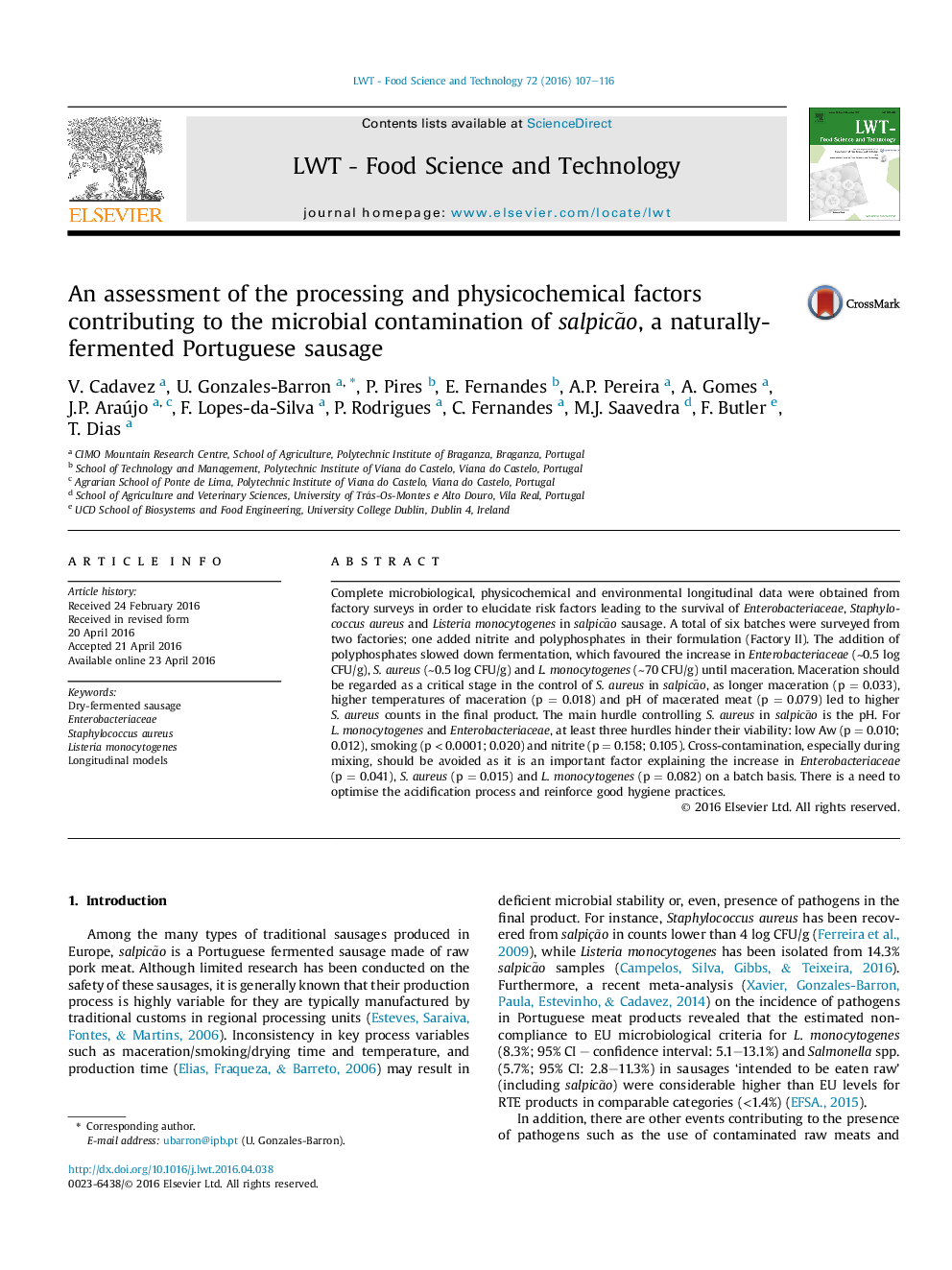| کد مقاله | کد نشریه | سال انتشار | مقاله انگلیسی | نسخه تمام متن |
|---|---|---|---|---|
| 4563263 | 1628525 | 2016 | 10 صفحه PDF | دانلود رایگان |

• The use of polyphosphates in naturally-fermented salpicão affects safety.
• Mixing is a critical stage as Enterobacteriaceae and pathogens increased significantly.
• Maceration is a critical stage for the control of Staphylococcus aureus in salpicão.
• During smoking, Enterobacteriaceae and pathogens were largely inhibited.
• Nitrite contributes to the decrease in Enterobacteriaceae and Listeria monocytogenes.
Complete microbiological, physicochemical and environmental longitudinal data were obtained from factory surveys in order to elucidate risk factors leading to the survival of Enterobacteriaceae, Staphylococcus aureus and Listeria monocytogenes in salpicão sausage. A total of six batches were surveyed from two factories; one added nitrite and polyphosphates in their formulation (Factory II). The addition of polyphosphates slowed down fermentation, which favoured the increase in Enterobacteriaceae (∼0.5 log CFU/g), S. aureus (∼0.5 log CFU/g) and L. monocytogenes (∼70 CFU/g) until maceration. Maceration should be regarded as a critical stage in the control of S. aureus in salpicão, as longer maceration (p = 0.033), higher temperatures of maceration (p = 0.018) and pH of macerated meat (p = 0.079) led to higher S. aureus counts in the final product. The main hurdle controlling S. aureus in salpicão is the pH. For L. monocytogenes and Enterobacteriaceae, at least three hurdles hinder their viability: low Aw (p = 0.010; 0.012), smoking (p < 0.0001; 0.020) and nitrite (p = 0.158; 0.105). Cross-contamination, especially during mixing, should be avoided as it is an important factor explaining the increase in Enterobacteriaceae (p = 0.041), S. aureus (p = 0.015) and L. monocytogenes (p = 0.082) on a batch basis. There is a need to optimise the acidification process and reinforce good hygiene practices.
Journal: LWT - Food Science and Technology - Volume 72, October 2016, Pages 107–116